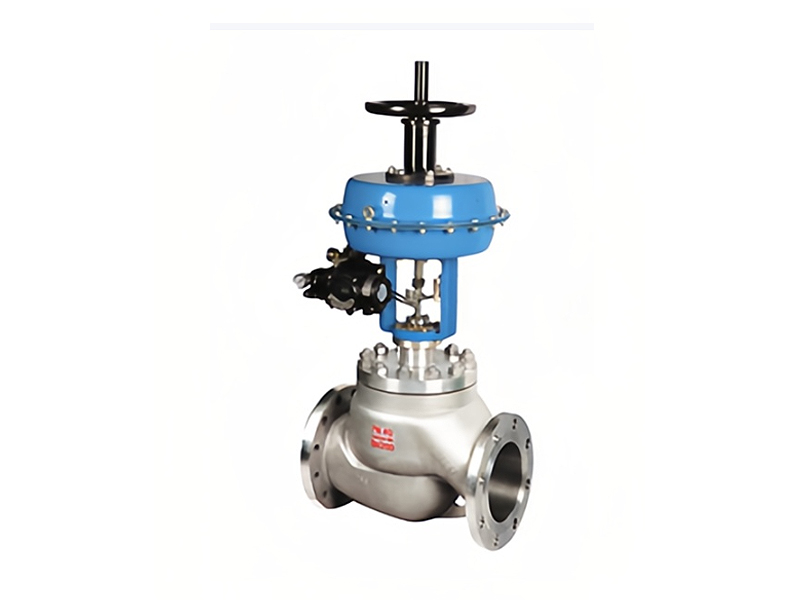
M series pneumatic sleeve control valve
The M series pneumatic sleeve control valve is a pressure-balanced control valve. It adopts a sleeve guided and pressure-balanced double-sealed valve core structure. The flow channel is in an S streamlined shape and is equipped with a multi-spring actuator, ensuring smooth overall operation. It features a large allowable pressure difference, precise flow rate and low noise. It is particularly suitable for large flow rates and significant pressure differences before and after the valve. In situations where the requirements for leakage are not high. The products are widely applied in the automatic control systems of industrial sectors such as chemical engineering, petrochemicals, chemical fibers, power, metallurgy, and environmental protection.
Nominal diameter | DN15~DN400 |
Nominal pressure | PN1.0~PN10.0 Class150~Class600 |
Working temperature range | -196℃~565℃ |
Connection method | Flanged type, welded type and threaded type |
Valve body material | WCB CF8 CF8M CF3M TA C-276 2205 |
Material of the valve internals | 304 304+STL 316 316+STL 316L 316L+STL 17-4PH C-276 |
Valve cover form | Standard type, heat dissipation type, elongated type, bellows seal type, bellows seal heat dissipation type |
Flow characteristics | Equal percentage, straight line |
Leakage grade | Hard seal Grade IV, Soft seal Grade VI (Standard ANSIB16.104) |
Thin-film actuator | PZM200 PZM280 PZM400 PZM600 PZM1000 PZM1600 |
Spring range and air source | 40-200KPa (0.25MPa for air source) 80-240KPa (0.3MPa for air source) |
Input signal | 4-20mA.DC |
【 Product Features 】
1.The flow channel adopts an S-shaped structure, which can suppress the vortices generated by the complex shape of the flow path and the complex and irregular flow caused by the sudden expansion of the flow path, thereby achieving efficient and stable medium flow.
2. It adopts a modular design, featuring strong interchangeability and universality. By replacing different sleeves, different flow coefficients and flow characteristics can be obtained.
3. Balanced structure: Significantly reduces the unbalanced force acting on the valve core; Meanwhile, it also features damping operation, which is conducive to the stable operation of the control valve. Through specially designed symmetrical small holes on the valve internal components, noise can be reduced, further pressure reduction can be achieved, thereby preventing flash evaporation and cavitation. It is particularly suitable for various high-pressure difference and low-noise applications, improving the comprehensive performance of the control valve. Therefore, it can be used in applications with large pressure differences and low noise.
4. Convenient installation and maintenance: The valve seat is pressed against the valve body through the valve cover without using threaded connection, making installation and maintenance convenient.
5. Due to the adoption of a multi-spring type small and high-output force diaphragm actuator with a simple mechanical structure, the height of the control valve has been successfully and significantly reduced, achieving miniaturization.
6. By using the high-precision flow characteristic curve IEC as the standard technical parameter, the "ideal" flow was theoretically achieved, ensuring the stability of process gain. Under the condition of process control based on computer simulation and valve opening degree, flexible control can be achieved.